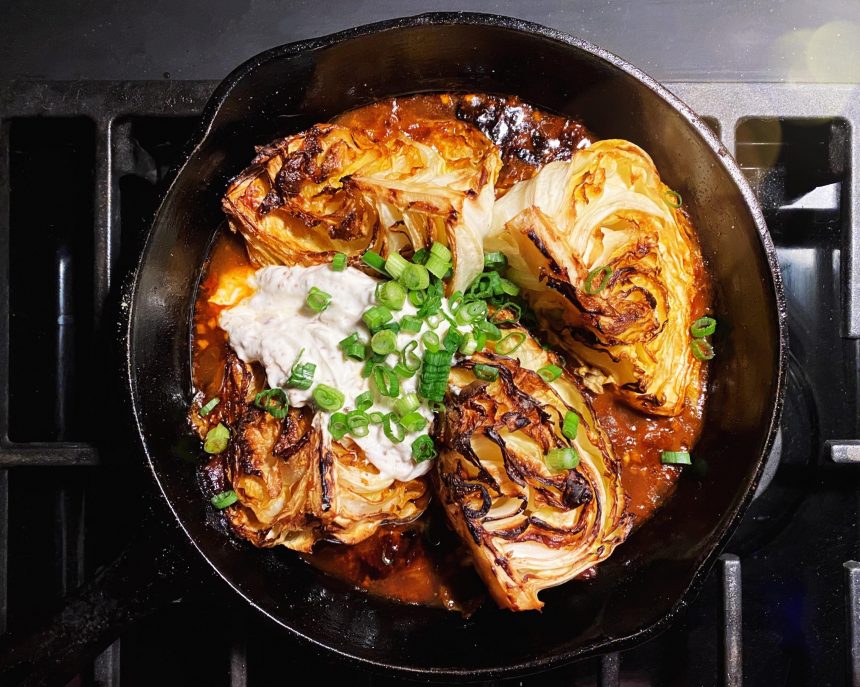Note from the President of La Biblioteca:
It is with profound sadness that we have learned the passing of our dear friend and contributor Tim Hazell a few days after he mailed his latest installment to our food column.
The following is more than a recipe, for it gives a glimpse into the world of a great artist for whom art ,culture, and civilization are part of the whole ensemble to improve our quality of life.
—Ali Zerriffi
By Tim Hazell
Divergent cultures and civilizations developed out of a nucleus that is common to aggregates of people who form settlements, achieving social stratification. These include a trinity of things, persons, and ideas. More than an assemblage of people who are interdependent on talent and the labor pool of a cooperative for survival and quality of life, traditions imply connected systems. Arts and sciences represent ideas as well as commodities that germinate from an intuition.
We see ourselves as “beleaguered actors” at times, the emotive centers of the world surrounding us, moving freely and yet remaining the centers of that world. Eccentric people and objects surround us without consequence, leaving us to our own contemplations. Art is by consequence affected by our reinterpretation of its narratives and values.
In aboriginal societies, communication through mimetic gesture, sign systems, and “language” developed from the premise that there were invariant principles, representing a kind of unity and infinite choices, a form of variety, that determined how any system of information exchange could function. Animals exclusively and humans under conditions of stress use holophrastic “utterance” as a means to convey states such as fear, hunger, and surprise, usually a single exclamation or cry.
When the intent is to convey non-verbal states of feeling, color or scent may perform similar roles. Among birds, fish, and insects, certain colors initiate courtship, while others pinpoint sources of food. To be effective, communication must charge and concentrate expressions, leaving as few gaps in our understanding as possible.
Art releases strong signals, as does beloved cuisine. Here is a universal favorite recipe for Fall-Apart Caramelized Cabbage that has become a vegetarian classic!
Fall-Apart Caramelized Cabbage
Ingredients:
1/4 cup double-concentrated tomato paste
3 garlic cloves, finely grated
1-1/2 tsp. ground coriander
1-1/2 tsp. ground cumin
1 tsp. crushed red pepper flakes
1 medium head of green or savoy cabbage (about 2 lb. total)
1/2 cup extra-virgin olive oil, divided
Kosher salt
3 tbsp. chopped dill, parsley, or cilantro
Full-fat Greek yogurt or sour cream (for serving)
Directions:
Preheat oven to 350°. Mix tomato paste, garlic, coriander, cumin, and red pepper flakes in a small bowl. Cut cabbage in half through core. Cut each half through core into 4 wedges. Heat 1/4 cup oil in a large cast-iron skillet over medium-high. Working in batches if needed, add cabbage to pan cut side down and season with salt. Cook, turning occasionally, until lightly charred, about 4 minutes per side. Transfer cabbage to a plate. Pour remaining 1/4 cup oil into skillet. Add spiced tomato paste and cook over medium heat, stirring frequently, until tomato paste begins to split and slightly darken, 2–3 minutes. Pour in enough water to come halfway up sides of pan (about 1-1/2 cups), season with salt, and bring to a simmer. Nestle cabbage wedges back into skillet (they should have shrunk while browning; a bit of overlap is okay). Transfer cabbage to oven and bake, uncovered and turning wedges halfway through, until very tender, liquid is mostly evaporated and cabbage is caramelized around the edges, 40–50 minutes.
Scatter dill over cabbage. Serve with yogurt alongside.

